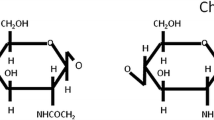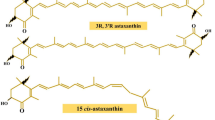Abstract
Matrixins play a major role in tissue regeneration and also in various patho-physiological processes. Discovery of matrix metallo proteins (MMPs) and their detailed structural and functional analysis would lead to the development of numerous potent synthetic inhibitors of matrixins to treat certain diseases. In the present investigation, a marine cephalopod- Octopus sp. collected from Cochin, in the south western Indian Ocean was used as animal model for purification of matrixins. The measurements, count, indices and other morphometric characters were noted down before assessing the presence of matrixins in the crude extract of Octopus samples. Purification of matrixins was carried out employing gel filtration chromatography and the purified matrixins was confirmed by gelatin zymogram. The purity of the protein was checked by both native and SDS-PAGE. The studies have provided clear indications of production of MMPs or matrixins with gelatinolytic activity in Octopus sp.






Similar content being viewed by others
References
Murphy G, Cawston TE, Galloway WA et al (1981) Metalloproteinase from rabit bone culture mechanism degrade type IV and V collagens laminin and tibronectin. Biochemical Journal 199:807–811
Paiva KB, Granjeiro JM (2014) Bone tissue remodeling and development: focus on matrix metalloproteinase functions. Arch Biochem Biophys 561:74–87
Caley MP, Martins VL, O'Toole EA (2015) Metalloproteinases and wound healing. Adv Wound Care. https://doi.org/10.1089/wound.2014.0581
Webster NL, Crowe SM (2006) Matrix metalloproteinases, their production by monocytes and macrophages and their potential role in HIV related diseases. J Leukoc Biol 80(5):1052–1066
Liu Y, Zhang H, Yan L et al (2018) MMP-2 and MMP-9 contribute to the angiogenic effect produced by hypoxia/15-HETE in pulmonary endothelial cells. J Mol Cell Cardiol 121:36–50
Rodríguez D, Morrison CJ (1803) Overall CM (2010) matrix metalloproteinases: what do they not do? New substrates and biological roles identified by murine models and proteomics. Biochimica et Biophysica Acta -Mol Cell Res 1:39–54
Huxley-Jones J, Clarke TK, Beck C et al (2007) The evolution of the vertebrate metrincins; insights from Ciona intestinalis and Danio rerio. BMC Evolut Biol 7(1):63
Page-McCaw A (2008) Remodeling the model organism: matrix metalloproteinase functions in invertebrates. In: Seminars in cell & developmental biology. Academic Press, Cambridge Vol 19, pp 14–23
Vu TH, Werb Z (2000) Matrix metalloproteinases: effectors of development and normal physiology. Genes Dev 14(17):2123–2133
Roper CFE, Voss GL (1983) Guidelines for taxonomic description of cephalopod species. In procedings of the workshop on the biology and resource potential of cephalopods.49–63
Mangold K (1998) The octopodinae from the Eastern Atlantic Ocean and the Mediterranean Sea. In systematics and biogeography of cephalopods. 521–547
Huffard GL, Hochberg FG (2005) Description of a new species of the genus Amphioctopus (Mollusca: Octopodidae) from the Hawaiian Islands. Molluscan Research 25:113–128
Bradford MM (1976) A rapid and sensitive method for the quantitation of microgram quantities of protein utilizing the principle of protein-dye binding. Anal Biochem. 72:248–254
Lyons JG, Birkedal-Hansen B, Moore WG et al (1991) Characteristics of a 95-kDa matrix metalloproteinase produced by mammary carcinoma cells. Biochemistry 30:1449–1456
Leite TS, Haimovici M, Molina WK (2008) Morphological and genatic description of Octopus vulgaris complex (Cephaloda: Octopodidae) from the tropical south western Atlantic. Journal of Molluscan Studies 74:63–74
Guerra A, Roura A, Gonzalez AF et al (2010) Morphological and genetic evidence that Octopus vulgaris Cuvier. J Mar Sci 67:1401–1407
Kleiner DE, Stetler-Stevenson WG (1994) Quantitative zymography detection of picogram quantities of gelatinases. Anal Biochem 218:325–329
Bjornland K, Winberg JO, Odegaard OT et al (1999) S100A4 involvement in metastasis deregulation of matrix metalloproteinases and tissue inhibitors of matrix metalloproteinases in osteosarcoma cells transfected with an anti-S100A4 ribozyme. Can Res 59:4702–4708
Knauper VC, Lopez-Otin SB, Knight G, Murphy G (1996) Biochemical characterization of human collagenase-3. J Biol Chem 271:1544–1550
Bencsik P, Bartekova M, Görbe A et al (2017) MMP activity detection in zymograms. In: Wilkesman J, Kurz L (eds) Zymography. Humana Press, New York, NY, Methods in Molecular Biology, pp 53–70
Cui N, Wang H, Long Y et al (2015) Dexamethasone suppressed LPS-induced matrix metalloproteinase and its effect on endothelial glycocalyx shedding. Mediators Inflamm. https://doi.org/10.1155/2015/912726
Seseogullari-Dirihan R, Apollonio F, Mazzoni A et al (2016) Use of crosslinkers to inactivate dentin MMPs. Dent Mater 32(3):423–432
Zhang S, An Q, Wang T et al (2018) Autophagy-and MMP-2/9-mediated reduction and redistribution of ZO-1 contribute to hyperglycemia-increased blood-brain barrier permeability during early reperfusion in stroke. Neuroscience 377:126–137
Zhang Y, Li P, Guo Y et al (2019) MMP-9 and TIMP-1 in placenta of hypertensive disorder complicating pregnancy. Exp Ther Med 18(1):637–641
Acknowledgements
The authors acknowledge Ms. Arul shiny for her help in experimentation. Ms. Asha thank Department of Science and Technology, India for Inspire fellowship (IF140069)
Author information
Authors and Affiliations
Corresponding author
Ethics declarations
Conflict of interest
The authors have no conflict of interests.
Ethical Approval
The manuscript doesn’t contain human studies. The animal used in this experiment doesn’t need approval of ethical clearance in our country.
Additional information
Publisher's Note
Springer Nature remains neutral with regard to jurisdictional claims in published maps and institutional affiliations.
Rights and permissions
About this article
Cite this article
Venkatesh, S., Asha, S. & Krishnaveni, M. Purification of Matrixins from Marine Cephalopod. Protein J 39, 284–290 (2020). https://doi.org/10.1007/s10930-020-09893-1
Published:
Issue Date:
DOI: https://doi.org/10.1007/s10930-020-09893-1




